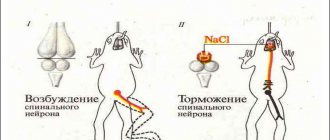It is worth noting right away that it is a mistake to use the words “communication” and “communication” as synonyms. Communication (according to Ozhegov’s explanatory dictionary) is mutual relations, business or friendly relations. This is an Old Church Slavonic word that has long been part of the Russian literary language.
“Communication” comes from the Latin word “communicare”. It means not only “to communicate”, but also “to do something in common; share something; act together, together." Both terms are united by the word “general,” and by this general is meant the subject of conversation. What's the difference?
Definition of the concept
What do we mean by the term "communication"? If we talk about this concept in simple language, it means communication in its various manifestations. And if this had not happened, it is impossible to imagine how a person would live.
The word “communication” comes to us from the Latin language. In it, communication means “transfer” or “message”. That is, communication in a general sense is understood as the exchange of information that occurs between interlocutors. It is also the transmission of a message from one person to another.
Types and forms of communication are very different, speech and non-speech. People, even without speaking, are able to communicate with each other using symbols, facial expressions or gestures. There is also written communication.
It becomes clear that if the transfer of information between several participants in a conversation turns out to be ineffective for some reason, then people will never be able to reach an agreement among themselves. In other words, various types of communications are the basis for the existence and activities of any organization.
The communicative side of communication
You might be interested in: What kind of method is functionalism? Concept, theory, concept and principles of functionalism in sociology
Communication as communication is the mutual exchange of information between interlocutors, the transmission and reception of knowledge, points of view and feelings. It should be noted that information in the process of communication is not simply transferred from one person to another (the person who transmits information is called the communicator, and the receiving party is called the recipient) - an exchange is carried out. It can be implemented both at the speech (verbal) and non-speech (non-verbal) level.
The need for information transfer
Through interaction with each other, people try to provide themselves with a more convenient and easier life. For example, a person can ask someone else for something, complain about a particular situation, and also receive useful information for themselves.
Using various types of communications, people exchange the facts at their disposal. Social and mass, marketing and non-verbal, business and many other types of communication have a similar direction.
During a conversation, people can take different positions in relation to their interlocutor. That is why the characteristics of the type of communication will depend on what roles a person chooses for himself. Thus, a dictator cannot help but treat everyone condescendingly. His statements are characterized by a commanding tone, uncompromising decisions and issued orders. As for his interlocutor, to create an ideal match, he must be pliable, submissive, quiet and amenable to influence. If people change their positions or do not strive to play the role assigned to them, then disputes will certainly arise during the conversation.
Using various types of communications, people adapt to each other in communication. Thus, the same person speaks with some interlocutors in a commanding voice, with others he is friendly, and with others he prefers to be completely silent. The whole point is precisely what he is like, this second person. In the same case, if someone communicates with all people in the same way, then the interlocutors will adapt to him.
In addition to these, there are many more types of social communication. All of them will depend on the character and habits, desires and goals, skills and position of a person in society, as well as fears, complexes and other aspects that each interlocutor has.
Communication difference
People constantly exchange information with each other. A similar process is communication, which is divided into various types, that is, methods used by people when interacting with each other. A similar transfer of facts occurs at the level of exchange of attitudes and feelings, ideas and opinions, views and ideas using non-verbal and verbal ways.
Types of communication include:
- Organizational, including external and internal, informal and formal, as well as horizontal.
- Interpersonal, which are suggestive and persuasive, cognitive and expressive, as well as ritual.
All these types of communications differ from each other in what information people exchange, what goals they pursue, and what roles they choose.
In modern society, becoming a good conversationalist is very difficult. After all, every person has his own worldview and opinion. They set their own rules of life and express expectations that are different from others. This is why we so often have to deal with views that do not coincide with those observed among the people around us. Also, sometimes you have to overcome the aggression of your interlocutor, which he expresses in defense of his opinion.
Main types of communication
With the most general division of ways of transmitting information from person to person, they are divided into verbal and non-verbal. These types of communications use different sign systems. That is why it is so difficult to describe the process of information transmission itself, which characterizes the variety of signals used.
There are three types of intercultural communication. These include verbal, nonverbal, and paraverbal. How are they different from each other?
By verbal communication we mean the transfer of information in words. This is a process in which one person speaks and the other listens. As for non-verbal communication, it occurs due to the existence of a system of signs called “opticokinetic”. In this case, pantomime, facial expressions and various gestures would be appropriate.
If we analyze the main types of communication, non-verbal communication processes differ in that when they are carried out, different tone and intonation are appropriate, and there is also eye contact between the interlocutors. This method of communication makes it possible to externally express a person’s inner world, and also indicates his level of personal development.
In paraverbal communication, sound signals are simultaneously used to accompany a person’s speech and add some additional meaning to it. In this case, the meaning of what is said changes based on the intonation of the speaker, the timbre and rhythm of his voice, as well as on logical and phrasal stress.
Communication systems
Communication and all accompanying processes have a close relationship with sign systems. These include numerical symbols, symbols, alphabet, road signs, as well as sound and color signals. It is worth noting that the use of these symbols facilitates the establishment of distance communication if direct contact between the participants is considered impossible.
Communication as communication and a form of interpersonal relationships combines perceptual and interactive functions with communicative ones. If communication is associated with the exchange of information between people, then the perceptual side is responsible for their perception of each other, and the interactive side involves organizing the interaction between them in accordance with the type of business, personal or official communication.
Verbal communications
People use this type of communication almost every minute of their active life. After all, each of us constantly exchanges information with friends and colleagues, teaches someone, listens to someone’s thoughts, etc. Such listening, as well as speaking, is understood as verbal communication.
The means of this type of communication are word, speech and language. The last of them has been a means of transmitting information since ancient times. Language is one of the most basic tools of various types of communication. Words in this case are iconic symbols that simultaneously have several meanings.
Also, verbal communication is impossible without various forms of speech. Namely oral and written, external, internal, etc. With the help of speech, a person encodes certain information. Only after this should it be transferred to the interlocutor.
Types of speech communication include oral and written forms of communication between people. In addition, depending on one or another development of events, the transmission of information may have signs of a monologue or dialogue. Most often in everyday life we encounter the second of these types of verbal communication. In this case, the dialogue can take different forms. So, it happens:
- factual, when the exchange of information with the interlocutor is intended only to support the conversation and does not involve listening to the answer;
- informational, which is an active process of discussing a topic;
- confessional, which is a confidential type of dialogue that serves to express deep experiences and feelings.
- debatable, which arises when contradictions arise in points of view.
Not as often as with dialogues, we can encounter monologues in everyday life. They usually take place when delivering a report or lecture.
The main types of verbal communications, in addition to speech, also include conversation. What is it? It is the exchange of knowledge, thoughts and opinions using sound symbols. This process involves two or more people whose communication takes place in a relaxed atmosphere. Only in certain cases is this type of communication used. Both the types of information, the coverage of the problem, and the explanation of any issue in this case are presented in an informal setting. A slightly different direction is typical for an interview. It also refers to verbal types of communication, and its functions are to convey information concerning social, scientific or professional issues.
Communication between people can also occur through dispute. This type of verbal communication is a debate on socially important as well as scientific topics. Rigid boundaries of dispute limit communication between people.
In verbal communications, discussion is also distinguished. It, like a dispute, refers to a public form of information transfer, but at the same time a specific result is important for it. During the discussion, various opinions on the issue raised are discussed and people present their positions and points of view. The result of such communication should be a solution to the problem posed.
Another type of verbal transmission of information is an argument. It represents a confrontation of opinions expressed in a verbal struggle between people, each of whom defends his point of view.
QMS
In mass communication, special means are used, which are channels and transmitters through which information is distributed over large areas. The modern system includes several links. In particular, the QMS includes media, computer science and telecommunications. The first include the press, audiovisual channels (radio, teletexts, etc.), and information services. The media consist of technical means of recording, replicating, copying, storing data, as well as the constant, systematic dissemination of large volumes of musical, verbal, and figurative information.
Nonverbal Communication
This type of information transfer is communication without words. In this case, it becomes important how a person holds his back during a conversation, what his views, postures, facial expressions and gestures are, as well as at what distance he is located from his interlocutor.
In nonverbal communication, several zones are distinguished:
- Public. In this case, the distance to the informant is 400 cm or more. These types of communication are affected by the communication processes that occur during rallies or when giving lectures in classrooms.
- Social. In this case, the distance between the interlocutors is 120-400 cm. This happens during official meetings with those people who are unfamiliar to us.
- Personal. The distance between people in this case ranges from 46 to 120 cm. It is maintained during conversations with colleagues or friends, when there is also visual contact.
- Intimate. A distance of 15 to 45 cm occurs when communicating between close people. In this case, they can speak quietly, with complete trust in each other.
The list of main types of non-verbal communication includes sign language. These are movements that convey a person’s emotional mood. There are a huge number of such socially developed movements. In this regard, there is a classification of them, dividing gestures according to the internal state of the interlocutor, as well as the purpose of transmitting the message.
So, in the process of communication a person can make the following movements:
- illustrators who complement his information;
- regulators indicating attitude to the conversation;
- emblems that are generally accepted symbols;
- affectors that convey emotions.
There are also gestures of confidence and evaluation, self-control and uncertainty, insincerity and dominance, affection and denial, courtship, etc.
One of the ways of communication is human facial expressions. If the interlocutor's face is motionless, then it loses from 10 to 15% of information. Accurate messages about a person's condition are given by his lips and eyes. For example, the dilation or constriction of the pupils is beyond control. Such changes will clearly indicate emotions of fear, sympathy, etc.
Paraverbal communications
The meaning of the speech spoken by a person can change depending on the intonation with which he pronounced this or that phrase, as well as the timbre of the voice used to convey sound symbols. Based on this, the interlocutor’s emotions, his confidence or uncertainty, etc. become clear. Such means are classified as paraverbal. They include in their list a set of those sound signals that accompany oral speech and allow us to see additional meanings in it.
An example of paraverbal communications is the utterance of a phrase with a questioning intonation, with sarcasm, with humor, with disgust, etc. That is, in this case, information is transmitted from person to person thanks to vocal tones, which are given a certain meaning in the languages of various nations. With such speech, any spoken word will never become neutral. Moreover, how a person says sometimes becomes more significant than what he says.
What makes paraverbal communications work? This type of information transfer uses the mechanism of human associations. It is thanks to him that our intellect restores facts obtained in the past, comparing them with those that exist at the present time. The effect of a phrase uttered during paraverbal communication is achieved due to the creation by the speaker of a common information field of interaction. The latter allows the interlocutor to understand his partner. At the same time, such communication achieves the greatest effect using the following means:
- Speech speed. When speaking in a manner that is lively and lively, while maintaining a fast pace of pronunciation of phrases, one can talk about the impulsive nature of the interlocutor and his confidence in his own abilities. Conversely, a slow and calm manner of speech will indicate prudence, equanimity and thoroughness of the speaker. If there are noticeable fluctuations in the speed of the text, we can talk about slight excitability, uncertainty and imbalance of the person.
- Volume. Well-heard speech can indicate the sincere motives of the interlocutor or his complacency and arrogance. Quiet speech indicates modesty, tact and restraint, or a lack of vitality. Significant changes in the volume of spoken phrases indicate excitement and emotionality of the interlocutor. Based on data from communicative practice, increased emotionality of speech sometimes leads to a lack of logic in it.
- Articulation. With clear and precise pronunciation of words, we can talk about the internal discipline of a person. If the speech is vague and unclear, then most likely the interlocutor is compliant and has a sluggish will.
- Voice pitch. Very often, falsetto is characteristic of the person whose speech and thinking are most based on the intellect. A chesty voice is a sign of increased emotionality. If a person pronounces phrases shrilly, this indicates his excitement and fear.
- Speech mode. With the rhythmic repetition of spoken phrases, we can talk about the good mood of the interlocutor, his balance and richness of feelings. With an angular, abrupt manner of speech, a person expresses his anxiety.
All of the above means of paraverbal communication are designed to evoke certain emotions in the partner, as well as feelings of experience, which leads to the achievement of certain intentions. Similar results can also be achieved using pauses and coughs, laughter and sighs, crying and other means of communication that use the voice.
Marketing communications
This concept means the process during which the target audience receives information about the product produced by the company and its properties. It is not easy to talk about the types of marketing communications as such. Most likely, these include the strategy chosen by the company for the purpose of presenting its product, as well as services, and their speedy implementation.
The main task of marketers in this case is to compile an accessible and attractive story about their company. In this presentation, they must indicate the product to be sold. The main objective of marketing communication is to provide correct information to the potential customer base about the product being offered, as well as how to sell it.
The main types of marketing communications include:
- Straight. It involves direct communication between sellers and buyers, encouraging them to make a purchase during the dialogue. What will the final result depend on? In most cases, it directly depends on the desire and skills of the seller himself, as well as on his ability to interest customers in the product offered. The advantage of direct marketing communications is the ability to change the communication style of the seller, adapting to the buyer.
- With the help of intermediaries. This type of marketing communications makes it possible to communicate with as wide a range of people as possible. The disadvantage of this transfer of information is the inability to adapt to the buyer.
They are also used in marketing types to attract buyers. Among them:
- Brand. Such a tool for attracting customers is a certain image of a company or brand. The brand is designed to evoke positive emotions among customers. They understand that products under this brand are only of high quality. In this case, marketers place the main emphasis on the constant cooperation of sellers and buyers, even if they did not have to see each other in person.
- Advertising. It is also a form of marketing communications. Advertising serves to promote the company's product and is paid for by it. In this case, information is disseminated via radio, media, print media and television.
- Sales promotion. This means of communication refers to various types of marketing, which for some time increase the activity of buyers, the work of distributors and staff.
- Public relations. This means of communication is designed to create a positive image of the company's product in people's minds.
- Special means. Their main purpose is to deliver a marketing message to points of direct sale. This allows you to stimulate trade and use advertising and design tools that increase the likelihood of a purchase.
- Package. In addition to its main purpose, it can become an excellent field for placing a communication marketing message.
- Service maintenance. This is the most important means of strengthening the position of marketing communications. After-sales service maintains the company's authority, which is an incentive to make purchases in the future.
Comparison of categories
You will be interested in: Development of cognitive abilities of junior schoolchildren, Federal State Educational Standards: formation, foundations of education, goals and objectives
The most important property of communication is universality, the ability to competently connect the types of relationships between people that exist today, which serve as a tool to satisfy the need for teamwork and enable each person, through the category of mutual understanding, to consider himself as a unique individual. This primarily includes communication (the type of communication that is considered the main one), interaction between participants in the communication process and their direct perception of each other as partners developing a dialogue.
Business communications
Existing types of such communication have a clear structure, content and styles. Which one is applicable depends on the desired results.
Among the types of business communications, verbal and non-verbal are distinguished. In the first of these, information is transmitted through speech. Nonverbal type of communication is based on facial expressions and gestures expressed by the interlocutor.
Among private types of business communications, negotiations stand out. They are conducted between several partners or colleagues. During negotiations, people share their opinions and learn about their opponent's position. The result of such communication is the coming to a common opinion on a particular problem.
Among the types of communications in an organization, business conversation is distinguished. It is a discussion between company employees about a specific topic. Very often, companies consider issues related to improving the company's performance.
Another type of communication in an organization is a business meeting. During it, a specific issue is considered, which is communicated in advance to each of the participants in the conversation. For this purpose, a written form of communication is used.
To resolve a pressing issue, a business discussion is held through the efforts of company employees. In this case, there is no distinction between wrong and right, lower and higher. In this case, all employees express their opinions.
Organizations often use this type of business communication as public speech. It is a monologue with notes of dialogue. In this case, the speaker sets a goal to reveal a certain topic, and his listeners receive the information they need.
Networks
In a small group, various information is disseminated through communication systems. They can be centralized or decentralized. In the first case, the subject disseminates information important to the group around himself. Centralized networks are divided into:
- Frontal. Within such a system, participants do not come into contact, but are within sight of each other.
- Radial. In such a system, information is transmitted to group members through a central entity.
- Hierarchical. These structures require two or more levels of subordination of participants.
In decentralized networks, group members are equal. Each participant can receive, process and transmit data, and communicate directly with other entities. Such a system can be in the form:
- Chains. Within this structure, information is disseminated sequentially from participant to participant.
- Circle. Under such a system, all group members have the same opportunities. In this case, information can endlessly circulate between participants, be clarified, and supplemented.
A decentralized data exchange system can be complete. In this case, there are no obstacles to free interaction.









